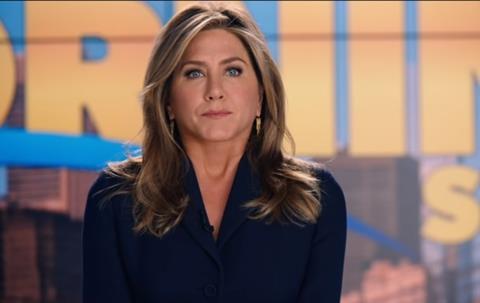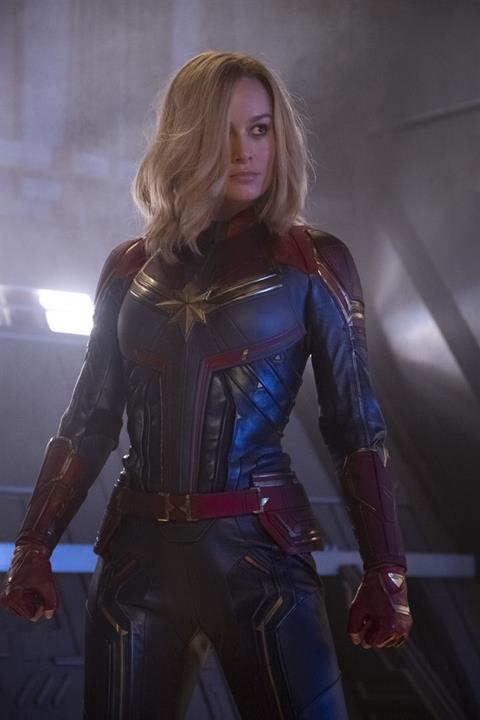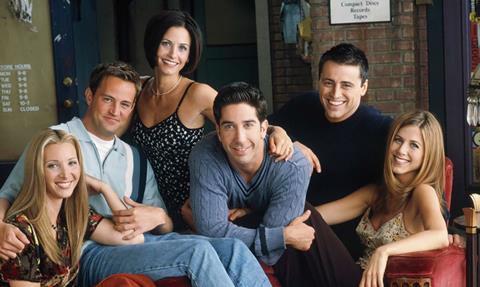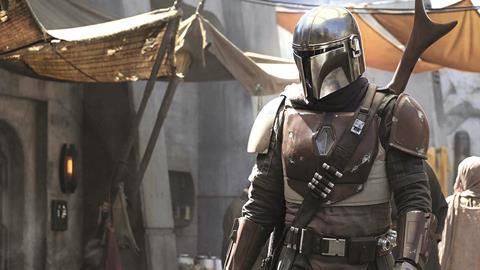With Apple, WarnerMedia and Disney entering the fray, John Hazelton looks at what impact the new players will have on the global SVoD landscape and the established services
The streaming wars are about to kick off in the US, but only a few brave souls are willing to predict the winners. Most in the media industry are waiting to see how the big players lay out their plans as 2019 unfolds.
Last month, Apple showed its hand at its reveal event in California. Having built up its team of worldwide video executives over the past 18 months and spent an estimated $1bn (£760m) on commissioning original content, the consumer tech giant revealed an Amazon Channels-style aggregation service and subscription service Apple TV+, where its slate of high-end originals will sit.
Former Sony programming bosses Zack Van Amburg and Jamie Erlicht, who co-head Apple’s worldwide video efforts, have built a slate of broad appeal, family-friendly programming.

Marquee titles include Reese Witherspoon and Jennifer Aniston comedy-drama series The Morning Show, Steven Spielberg’s Amazing Stories reboot, JJ Abrams’ Little Voice and docs from Oprah Winfrey.
Meanwhile, former Channel 4 content chief Jay Hunt has been doing the same in Europe, and several UK indies have landed shows in the drama, docs and natural history space.
However, no pricing for Apple TV+ was announced, nor were there any signs of the company pursuing acquired content or co-productions.
Meanwhile, Disney has unveiled Disney+ – the central element of a direct-to-consumer (DTC) push that Disney chief executive Bob Iger has described as “the company’s number-one priority”.
The global SVoD platform will boast family-oriented content from the company’s Disney, Pixar, Lucasfilm and Marvel labels.
Existing US streamer Hulu, which Disney now majority owns following the $71.3bn (£55bn) takeover of Fox and cable network FX (also acquired through Fox), will handle more adult material, including theatrical features, in their traditional pay-TV window, beginning with Captain Marvel.

The 20 or so originals in production for Disney+ include Star Wars spin-off series The Mandalorian and a handful of mid-budget films such as a live-action version of Lady And The Tramp.
Warner Media’s yet-to-be-named streaming service in the US, for which a beta launch is being promised by the end of this year, is expected to have subscription and ad-supported elements.
It will likely be offered on three levels: a basic film-focused tier; a premium tier with original content and theatrical titles; and a third bundling content from the other two with extra library and licensed programming.
Under an executive structure designed by new corporate parent AT&T, Warner Media has been touting the service’s potential as an aggregator of content from its brands, such as superhero home DC, child-friendly Looney Toons and film labels New Line and Warner Bros.
Some content from HBO, the Warner cable network that is going through an executive shake-up of its own, is also expected to be part of the service, though the HBO Now SVoD platform will remain as a standalone offering.
Teasing the studio’s new service, Warner Media DTC chief Kevin Reilly recently said his team will begin commissioning original premium content, adding: “This is where we’ll build on the foundational ethos of HBO.”
Meanwhile, NBC Universal is expected to join the fray with an ad-supported service in 2020. It will offer library content, licensed material and original programming to its pay-TV subscribers in the US and other markets, and will also be available to the 52 million cable subscribers of parent Comcast and on the European services of Comcast’s multibillion-dollar acquisition, Sky.

Meanwhile, Viacom could become another combatant by launching a DTC service on the back of Pluto TV, the US free streaming service it bought in January for $340m (£260m).
Unsurprisingly, the media giants about to commit billions to their streaming ventures tend to play down the importance of head-to-head competition.
“We’re not looking to battle with Disney,” said Reilly last month. “We don’t need to beat Netflix. We just need and desire to be a differentiated alternative.”
But with US SVoD households already paying for an average of 2.79 services each, according to research from Ampere Analysis, the new entrants will be competing to become many families’ third, fourth or fifth subscription.
“That’s a difficult place to be, particularly when there are so many services that are going to be launching at about the same time,” says Ampere research director Richard Cooper.
Subscriber competition
Apple TV+ may be least susceptible to competition, suggests one analyst. “Apple can be an instant winner because it will give premium placement to its service on all its devices,” says Peter Csathy, head of US-based advisory and business development firm Creatv Media. “It can immediately put its service front and centre, so that’s really powerful.”
Disney+, which analysts predict could secure 2 million subscribers by the end of this year and 15-20 million by the end of 2020, “is positioned extremely well because it has a unique brand and content”, adds Csathy. “It has the crown jewels of intellectual property.”

By comparison, the task of establishing Warner Media’s streaming service in an increasingly crowded landscape will be “a little more challenging”, says Csathy.
As well as providing fresh competition for the household entertainment budget, the new streaming services will affect the established streamers – Netflix, Amazon, Hulu and, to some extent, YouTube – in other ways too.
In preparation for the launch of its own streaming venture, Disney ended its distribution deal with Netflix 18 months ago, and while Netflix did manage to extend its deal for Warner’s iconic sitcom Friends to the end of this year (albeit at a cost of $100m), such agreements may not be on the table in future.
“Sharing destination assets like that is not a good model,” Warner Media’s Reilly said when discussing his company’s plans. “My belief is that they should be exclusive to the service.”
To make up for the loss of content licensed from outside studios, Netflix has been ramping up its output of originals, apparently with the desired results. According to recent research from Parrot Analytics and S&P Global Market Intelligence, the share of audience demand for Netflix originals is set to overtake that of the service’s licensed titles by October this year.

That may be why Netflix chief executive Reed Hastings appears sanguine. During a recent earnings call, he insisted: “We compete so broadly with all of these different providers that any one provider entering only makes a difference on the margin.”
After the US, the next front in the streaming wars will be the global market place. Warner Media hasn’t yet set a timetable for a worldwide rollout and will continue to sell international streaming rights for now, but Apple’s service will initially be in 100-plus countries.
Disney is exploring international rollout of Hulu and could leverage international assets such as the vast Star India pay-TV network (another part of the Fox acquisition) in the streaming world.
The studio services may also face regulatory hurdles such as the impending European Commission streaming content quota and local competition from services such as the UK’s BBC/ITV venture Britbox and France’s Canal+ Series.
Consumers may also be cautious: according to Ampere, SVoD service subscriptions average only 2.28 per household in the UK and 1.6 in France. Netflix already has 81 million international subscribers and is now signing up subs outside the US at a much faster rate than in it.
The company has big local production pushes in Europe and Asia and is opening a European production hub in Madrid where it makes Spanish-language teen drama Elite.
“Netflix has worked very hard to maintain that ‘first-mover’ advantage,” says Ampere’s Cooper. “That’s going to be one of the things that DTC services from the likes of Disney and Warner will struggle against.”

































No comments yet